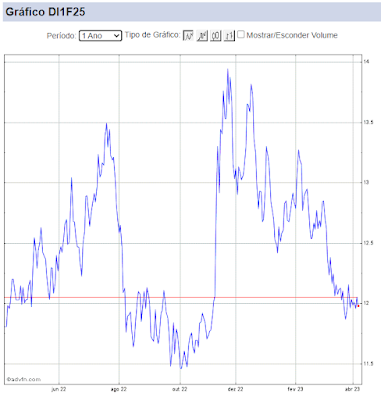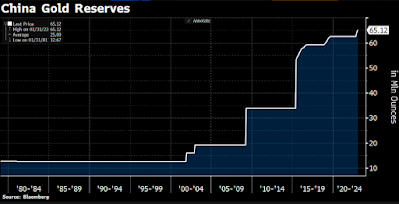Otimismo no mundo. Situação do BNDES no Brasil.
Os ativos de risco estão abrindo a semana em tom mais positivo. No lado
negativo, destaque para a queda das bolsas na China, que não foram capazes,
contudo, de contaminar a dinâmica no resto da Ásia e, esta manhã, na Europa e
nos futuros de índices dos EUA.
O dólar opera majoritariamente em queda ao redor do mundo, no que pode
ser o início de uma tendência mais prolongada de dólar fraco no mundo. Ainda me
parece cedo para fazer tal afirmação, mas se há uma tendência que eu começo a
acreditar de maneira mais estrutural seria de um dólar mais fraco ao redor do
mundo e, em especial, contra algumas moedas de G10. As commodities poderiam se
favorecer deste movimento.
De qualquer maneira, ainda há muita nebulosidade para recomendar uma
posição agressiva nesta frente, mas alguma alocação já seria recomendada.
A noite trouxe pouquíssimas novidades relevantes além do que eu já vinha
escrevendo nos últimos dias e pode ser revisto aqui: https://mercadosglobais.blogspot.com/.
No Brasil, o novo governo quer uma devolução maior do BNDES. O BTG
Pactual fez um excelente resumo desta situação. Abaixo, copio o texto de Carlos
Sequeira e Bernardo Teixera do BTG Pactual:
|
Finance Minister wants to accelerate BNDES debt repayments to
the Treasury
|
||
|
One of President Bolsonaro
economic team’s main pillar is to accelerate the privatization program. The
goal is to raise money to reduce Brazil’s alarmingly high levels of public
debt. However, the process of privatizing companies may be time-consuming as
it depends on Congressional approval and a mesh of red tape. A quick way to
generate cash and start reducing the country's public debt would be to
accelerate the return of the money that BNDES owes to the Treasury, something
Finance Minister Paulo Guedes has already started to negotiate.
|
||
|
Payment to the treasury (still under negotiation) could total
R$100bn in 2019
|
||
|
The new economic team is
looking for the BNDES to repay to the treasury up to R$100bn in 2019 — the
development bank still has a debt of R$260bn to pay and the original
repayment schedule foresees only R$26bn being paid this year. To be able to
pay an amount close to what the economic team is looking for, the bank will
probably have to sell part (or all) of its stakes in Brazilian listed
companies. In 2018, BNDES has already accelerated the sale of equity stakes —
from January to September 2018, the bank sold R$6.4bn in equity stakes, out
of a guidance of R$12bn. In 2017, it sold R$6.7bn and R$1.7bn in 2016.
|
||
|
Several names we cover could come under a big selling pressure
|
||
|
At the end of September, BNDES
owned stakes worth (at current market prices) ~R$100bn. The size of BNDES’
stakes varies massively depending on which company you look at. In some
cases, its stakes represent up to a quarter of the company (see page 3 for complete
table with all companies and BNDES’ respective stakes). If BNDES decides to
sell some of these stakes, selling pressure could be big. According to our
estimates and based on the number of trading days, the stocks (under our
coverage) more exposed to selling pressure are CPLE3 (237 trading days),
TIET11 (90), JBSS3 (89), and TUPY3 (81). Naturally, we would expect
excessively large stakes to be sold via blocks.
|
||
|
Some stocks wd gain from higher liquidity: Marfrig, Cemig,
Tupy, Iochpe, Linx
|
||
|
In some cases, we believe the
positive effects of increased liquidity may outweigh the negatives of the
overhang. High-quality companies with relatively low stock liquidity may
benefit the most. Just to mention a few, we highlight Marfrig, Cemig, Tupy,
Iochpe and Linx.
|


Comentários
Postar um comentário